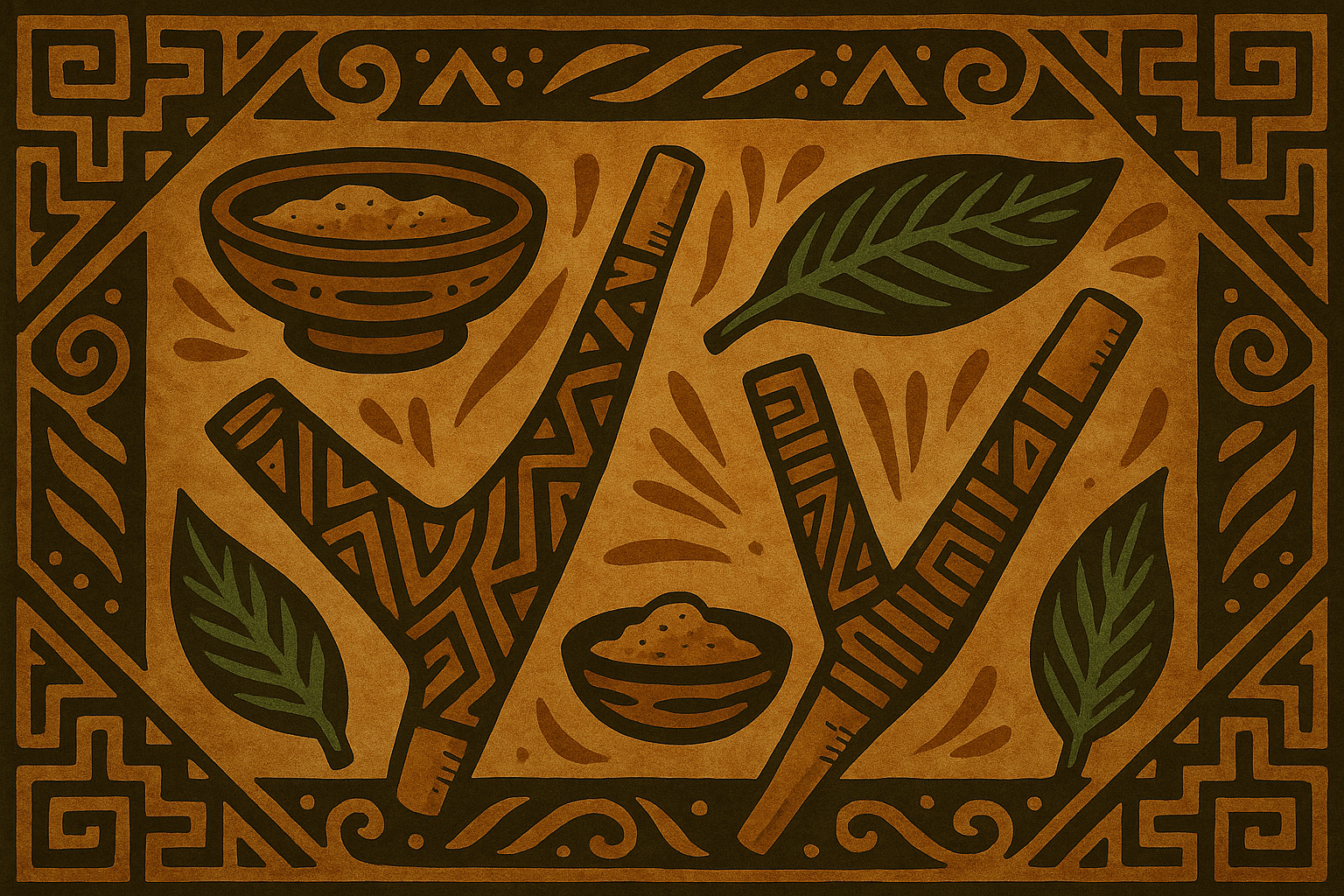In the heart of the Amazon, where the breath of the jungle carries the voice of the ancestors, sacred tools emerge from tradition to serve healing and consciousness. One of the most essential instruments in the ritual use of rapé is the hapé snuff tool, a bridge between the physical and the spiritual realms 🌬️.
Whether it’s a kuripe for self-application or a tepi for ceremonial sharing, these tools are much more than mere applicators. They are channels of energy, carved with purpose and often imbued with symbolic meaning. Understanding their role opens the door to a deeper connection with the medicine of rapé and the indigenous peoples who carry its legacy.
✨ What is a hapé snuff tool?
The term “hapé snuff tool” refers to the handcrafted pipes used to administer rapé, a sacred shamanic snuff made primarily from Amazonian tobacco (Nicotiana rustica) and other medicinal plants.
There are two main types:
- Kuripe: a V-shaped applicator used to blow the rapé into your own nostrils. Ideal for personal rituals and daily spiritual hygiene.
- Tepi: a longer pipe used to serve rapé to another person, typically during ceremonies, where the giver acts as a channel or vessel.
Both are traditionally made from bamboo, bone, wood, or antler, and may be adorned with carvings, feathers, seeds, or symbolic patterns. Their design varies according to the lineage, tribe, or spirit of the artisan 🌿.
🔥 Why are they important?
These tools are not only practical—they are sacred. In indigenous cosmology, the way a medicine is given is just as important as the medicine itself.
The act of blowing rapé is considered an energetic transmission. The kuripe or tepi guides the breath, the intention, and the spirit of the snuff into the body. Without the proper tool, the experience may be incomplete or disrespectful to the ancestral lineage behind the medicine.
A dedicated hapé snuff tool becomes an extension of the practitioner—charged with prayers, cleansed with smoke, and used with reverence.
🧘♂️ How to use a hapé snuff tool properly
Using a hapé snuff tool is not just a technique—it is a sacred ritual. Whether you’re applying the rapé to yourself or serving someone else, the tool must be used with respect and mindfulness.
💨 Self-application with the Kuripe:
- Prepare the space – Sit in a calm environment, preferably outdoors or in a clean, energetic space.
- Set your intention – The medicine works best when guided by clear spiritual focus or a healing purpose.
- Load the kuripe – Place a small amount of rapé (start with the size of a lentil) into the longer end of the kuripe.
- Insert and blow – Place one end into your nostril and the other into your mouth. Blow firmly, yet not aggressively.
- Repeat on the other side – Balance is key in the Amazonian traditions. Always do both sides.
Note: The first blow is said to “kill the ego”, and the second one “revives the soul” 🌬️
🌬️ Serving with the Tepi:
- Ask for consent – Serving hapé is an act of trust. Always obtain the recipient’s consent and ask for their intention.
- Load the tepi – Place the rapé in the middle or tip, depending on the design.
- Align and serve – Place the end gently in one nostril and blow with reverence. Repeat on the other side.
- Hold space – After application, hold silence or accompany the process with music, prayers, or grounding presence.
🧼 Care and cleaning of your tool
Just like any sacred item, kuripes and tepis require regular cleansing. Here are some ancestral methods:
- Smoke cleansing with palo santo, copal, or sage
- Sunlight and moonlight exposure to energize the tool
- Blowing prayers through it
- Wiping with natural oils or cloth (avoid harsh soap or chemicals)
Treat your hapé snuff tool as a spiritual companion. The more you care for it, the more it aligns with your vibration 🌱
🌀 Choosing the right hapé snuff tool for your journey
Not all tools are created equal. Choosing the right hapé snuff tool is a deeply personal decision influenced by your connection to the medicine, your purpose, and your aesthetic preferences.
🔸 Material matters
- Bamboo – Lightweight, eco-friendly, and traditional.
- Wood (e.g., chonta, palo santo) – Each type holds different energetic qualities.
- Bone or horn – Used in shamanic lineages for their ancestral energy.
- Ceramic or stone – Durable and grounding, often handmade and richly decorated.
Each material transmits energy differently. Feel it in your hands—your body often knows what it needs.
🔸 Shape and symbolism
- Curved or angular? Some kuripes have a sharp V-shape, others are smoothly curved. Choose based on comfort and symbolic resonance.
- Sacred carvings – Animal totems, tribal designs, or cosmological patterns may enhance the spiritual connection.
- Colors and adornments – Feathers, seeds, or beads can represent specific intentions (e.g., clarity, protection, grounding).
🔚 Final words: The hapé snuff tool as a spiritual bridge 🌈
Using a hapé snuff tool is not just about administration—it is about ceremony, connection, and consciousness. These tools act as bridges between worlds, channeling ancestral wisdom into the present moment.
Whether you’re a beginner or a seasoned practitioner, always remember:
🌬️ “Blow with reverence, receive with gratitude, walk with integrity.”
May your kuripe or tepi guide your path with clarity, healing and sacred presence.
🌿 Join the Sacred Rapé Tribe

We’ve opened an intimate group on Telegram for souls who honor this medicine with respect and purpose. Share rituals, spiritual guidance, and sacred energy in community.
You just need to leave your email to receive access. 🌕 See you within the circle!
🔗 Hapé: Therapeutic and Spiritual Uses – Mindful Psychedelics

